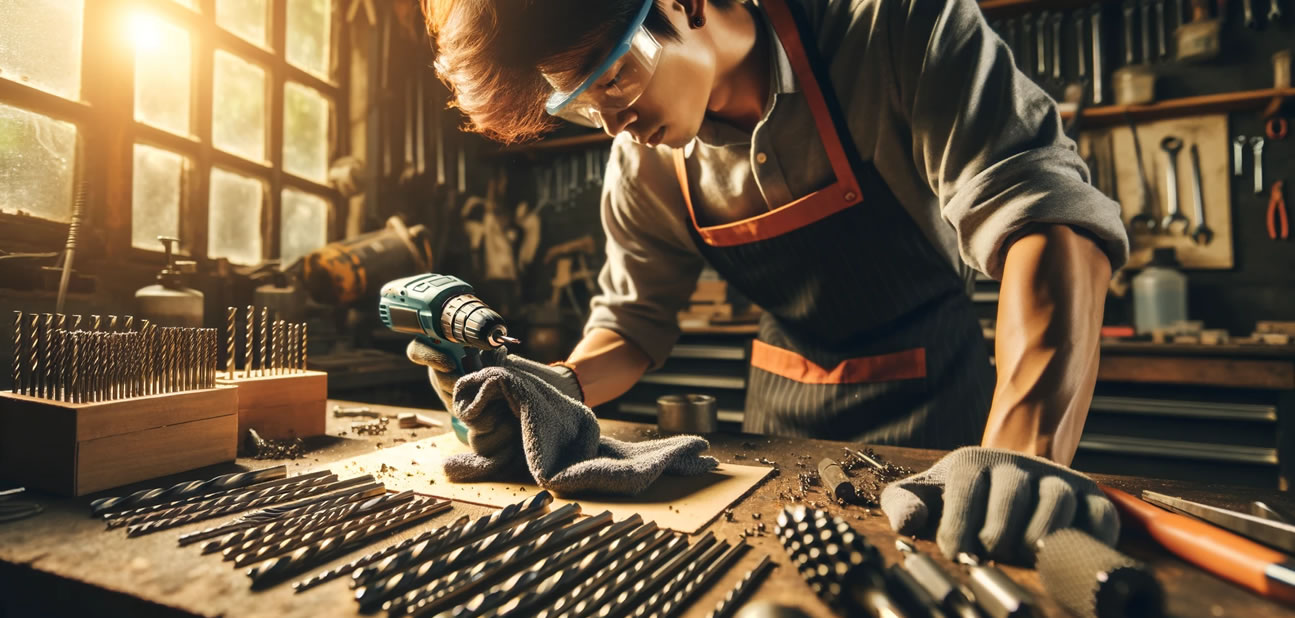Drill bits are indispensable tools in both professional and DIY projects, playing a critical role in drilling operations across various materials. However, their efficiency and longevity heavily depend on proper maintenance. This article provides a comprehensive guide on how to maintain your drill bits, ensuring they remain sharp, clean, and efficient for every task.
Understanding Drill Bit Types
Before diving into maintenance, it’s crucial to understand the various types of drill bits available. Common types include twist bits, spade bits, masonry bits, and metal bits, each designed for specific materials and applications. Knowing your drill bit type is the first step to proper care and maintenance.
Cleaning Drill Bits
- After Use: Always clean your drill bits after use. Remove debris and dust using a brush or air blower.
- Deep Cleaning: Occasionally, soak the bits in a cleaning solution to remove stubborn dirt and grime. Ensure the solution is suitable for the bit material to avoid corrosion or damage.
Sharpening Drill Bits
A dull drill bit is inefficient and can be dangerous. Regular sharpening is vital:
- Manual Sharpening: Use a bench grinder or a hand file, maintaining the correct angle for the cutting edge.
- Using a Drill Bit Sharpener: Drill bit sharpeners provide a more consistent and precise sharpening. Follow the manufacturer’s instructions for best results.
Storing Drill Bits
Proper storage extends the life of your drill bits:
- Dry Environment: Store them in a dry place to prevent rust and corrosion.
- Organized Storage: Use a drill bit case or organizer. This not only protects the bits but also makes it easier to find the right size and type when needed.
Inspecting for Wear and Damage
Regularly inspect your drill bits for signs of wear or damage. If a bit is cracked, bent, or excessively worn, it’s time to replace it. Using damaged bits can be unsafe and lead to poor quality work.
Lubrication and Cooling
When drilling metal, use cutting fluid or lubricant to reduce friction and heat buildup. This prolongs the bit’s life and improves cutting efficiency. In high-speed applications, consider using a cooling system to prevent overheating.
Handling and Usage Tips
- Correct Speed and Pressure: Use the appropriate speed and pressure for the material you’re drilling. Forcing a drill bit can lead to breakage and premature wear.
- Match Bit to Material: Always use the right drill bit for the material. Using a wood bit on metal, for instance, will quickly dull the bit.
Conclusion
Maintaining your drill bits is not only about prolonging their life but also about ensuring safety and achieving optimal drilling results. Regular cleaning, proper sharpening, and correct storage are key practices. By following these maintenance guidelines, your drill bits will remain reliable, precise, and ready for any project.
